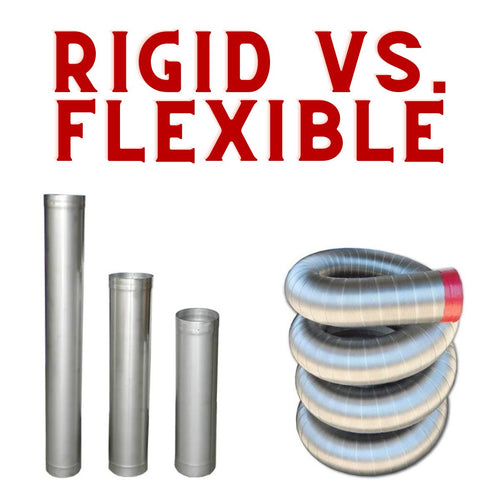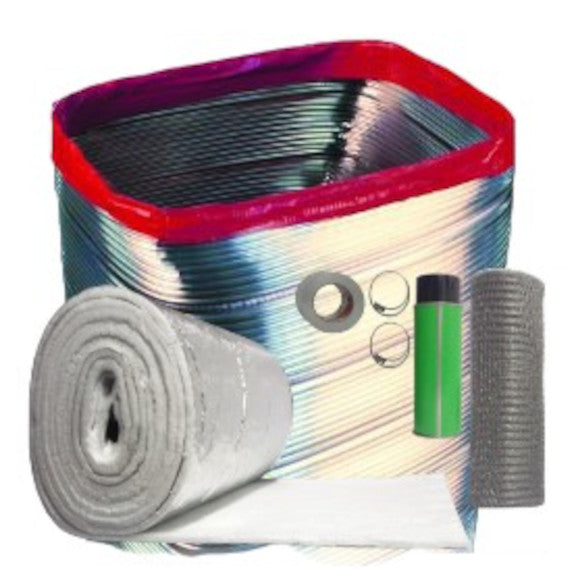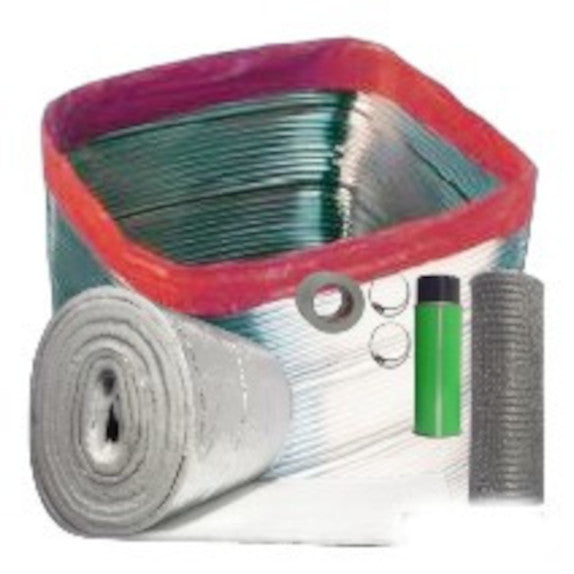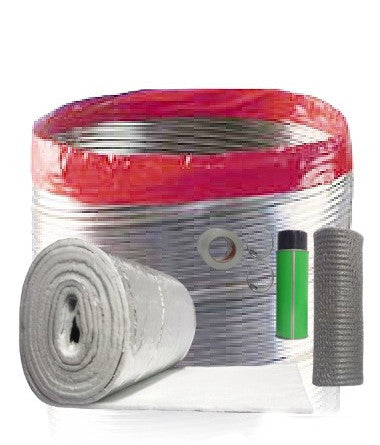Rigid vs Flexible Chimney Liner: Which Is The Best? Cost, Efficiency & More
July 19, 2023

What is the Difference?
The main difference between a flexible chimney liner and a rigid chimney liner is very straightforward. The flexible liner is able to bend and maneuver around offsets in the chimney flue, while the rigid chimney liner is straight and only able to be installed in a straight chimney.
In most cases the flexible chimney liners are able to be installed in one long section up to 50 ft. The rigid chimney liners are available in pipe sections ranging from 6 in. length to 48 in. length, they also require pop rivets to connect each section of pipe. The inside of a flexible liner is corrugated and a little rough while the rigid liner is ultimately smooth inside the liner.
Cost
There can be a lot of factors that go into the cost of the chimney liner. If you have started to shop around for a chimney liner you have probably noticed that the flexible chimney liners are often sold as a kit. The kit generally gives you the base parts necessary to install a chimney liner. In some cases the kit will not come with everything you need, but for the most part the base parts are there. The flexible chimney liner kits are usually priced lower than if you were to purchase the liner and parts individually which make the chimney liner kit an attractive option.
The rigid chimney liners are sold in pipe sections which makes it difficult to sell as a kit. When purchasing a rigid chimney liner, you will be purchasing the parts individually. There are also more parts involved with a rigid chimney liner system. The top of a flexible chimney liner kit consists of 2 parts, a top plate and a rain cap. The rigid chimney liners require a top plate, a support clamp, a storm collar and a rain cap.
Winner: Flexible Chimney Liner
Since the flexible chimney liner is sold in a kit, it makes it a much more cost effective chimney liner option. It would be less expensive to purchase a 15 ft. flexible chimney liner kit than it would be to purchase a rigid chimney liner for an 8 ft. chimney.
Installation

As long as you have enough room to fit the liner down the chimney flue, installing a rigid or a flexible liner will be fairly easy. Your chimney will have to be a straight shot down to the thimble hole to install a rigid chimney liner. As long as the chimney is straight it will drop right down. A flexible liner will often get caught when the flue tiles have shifted making it a little tricky installing the liner. All you have to do is twist and corkscrew the liner and it will navigate around any bumps in the chimney.
Since the rigid chimney liner comes in pipe sections, it requires you to pop rivet the sections together. This involves drilling through the male and female ends of the pipe and riveting them together. This can be a little time consuming and tricky if you are working off a ladder. The flexible liner can come in one section of liner up to 50 ft. long. The flexible liners also have a pulling cone available to allow you to pull the liner as someone is feeding it down from the top. This makes installing the flexible liner very easy.
Winner: Flexible Chimney Liner
The flexible liner can be installed in one section of liner. Attaching the section of rigid line together at the top of the chimney can be extremely difficult in cases, especially when you are working on a steep roof or off a ladder. The flex liners ability to be pulled down with a pulling cone makes the flexible chimney liner much easier to install than a rigid chimney liner.
Functionality
As long as the chimney liners are sized appropriately for the appliance or woodstove, either the rigid or flexible chimney liner will function properly. The rigid liners have a smooth wall which is better for venting oil and gas burning appliances. You are able to have a 20% higher BTU capacity in a rigid smooth liner and a 15% higher GPH (gallons per hour) firing rate for an oil burning appliance than a flexible corrugated liner. For power burners, the rigid smoothwall liner provides less drag than the flexible corrugated liner and will draft better. This will possibly allow you to down size the liner for a gas or oil burning appliance.
Winner: Rigid Chimney Liner
The rigid liner smooth interior wall will ultimately provide the best draft as opposed to the corrugated flexible liner.
Cleaning and Maintenance

A rigid chimney liner and a flexible chimney liner both have to be cleaned and maintained regularly to ensure the safety of the chimney liner and prevent a chimney fire. Both liners require the use of a poly or nylon bristle brush to be cleaned. Using a wire brush in a stainless steel chimney liner will hurt the liner by scratching the inside and slowing scraping through the liner. A rigid liner is smooth on the inside which makes the cleaning very easy. With a tight poly brush the creosote will scrub right off a rigid liner as you push the brush down the liner. The flexible chimney liner is corrugated on the inside which makes it a bit more difficult to clean. You will need to run the brush through a flexible liner a few more times than the rigid chimney liner.
Winner: Rigid Chimney Liner
The rigid liner being smooth on the inside makes simple work of the yearly chimney maintenance.
Overall Winner:
Rigid Chimney Liners

As long as the chimney is straight up and down and there are no offsets in the chimney, the rigid chimney liner is a great choice for installing a chimney liner. Even though the cost can be a little more and the installation takes a bit longer, the rigid chimney liner is going to perform the best and the maintenance is going to be the easiest. When installing a heating appliance in your home, the performance of the chimney will always outweigh the cost. Chimneys with bends and offsets are limited to the flexible chimney liner. The rigid liner just simply can't be installed in an offset chimney.
DIY Center
(AKA ‘The Rockford Files’)
From video tutorials to product walkthroughs, we have a variety of DIY resources just for you! Click the button below to view our entire library.








